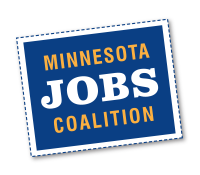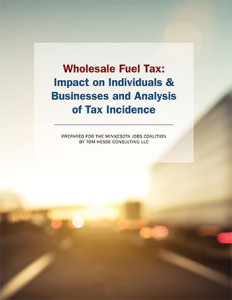Executive Summary
I. Minnesota’s Transportation Funding System: Minnesota has a traditional transportation funding system. It relies on the motor fuel excise tax, motor vehicle registration tax, and motor vehicle sales tax. All of the revenue is constitutionally dedicated to transportation purposes. Transportation revenue growth is slowing from around 4% in FY 2014-15 to less than 2% in FY 2019. This is primarily due to essentially no growth in fuel tax revenue. Motor vehicle registration tax revenue and motor vehicle sales tax revenue are expected to grow over that same period of time.
II. 2015 Transportation Funding Proposal: In 2015, a new funding mechanism was proposed for transportation – a 6.5% sales tax on gasoline at the wholesale level (wholesale fuel tax). The rationale for the new tax was that transportation revenue was not growing fast enough to meet the needs of the system and construction inflation. By switching from an excise tax to a wholesale tax, revenues would fluctuate as the wholesale price of gasoline increases or decreases. The proposal protected transportation funding from decreasing fuel prices by including a $2.50 wholesale price floor. This provision guaranteed a minimum tax increase of 16.2 cents per gallon ($2.50 x 0.065). At 44.7 cents per gallon, Minnesota’s fuel tax would be the second highest in the nation.
Wholesale fuel prices are expected to be below the $2.50 price floor until 2022 under the October 2015 World Bank forecast of crude oil prices, U.S. Energy Information Administration research on the relationship between crude oil prices and wholesale prices and Tom Hesse Consulting calculations. There are two ways to look at the impact of the price floor. First, it results in consumers paying more than would otherwise occur if no floor existed and, second, the effective tax rate of the wholesale fuel tax will be greater than 6.5% until 2022.
III. Impact of Proposed 6.5% Wholesale Fuel Tax on Individuals and Businesses: To estimate the impact of the proposed 6.5% wholesale fuel tax on individuals, a commonly purchased compact car, midsize car, minivan, SUV and pickup truck was selected and three mileage options were used. To check the sensitivity of the analysis to the age of the vehicles, model years 2015, 2010 and 2005 were used. Data for each vehicle’s fuel economy was taken from the respective U.S. Department of Energy’s Fuel Economy Guides. The table below shows the range of tax increase that would result from the proposed wholesale fuel tax on the five vehicles.
To estimate the direct impact on businesses, a similar analysis was performed using a delivery truck, dump truck and class 8 truck (semi-trailer truck) and two mileage options around an estimated annual miles traveled per year for these vehicle types. The age of the vehicle likely has a significant impact on this analysis. There are more hybrid options being introduced into the marketplace that have substantially better fuel economy. The table below shows the estimated direct impact of the 6.5% wholesale fuel tax on the three types of trucks.
IV. Tax Incidence of Proposed 6.5% Wholesale Fuel Tax: The Minnesota Department of Revenue’s Tax Incidence Study concludes that the current fuel tax is very regressive. Only the state’s tobacco taxes, gambling taxes and solid waste taxes were more regressive. The study also concluded that the tax on business inputs like gasoline would likely be shifted to consumers in the form of higher prices and that the burden of a business tax increase is less likely to fall on capital and more likely to fall on labor and consumers.


